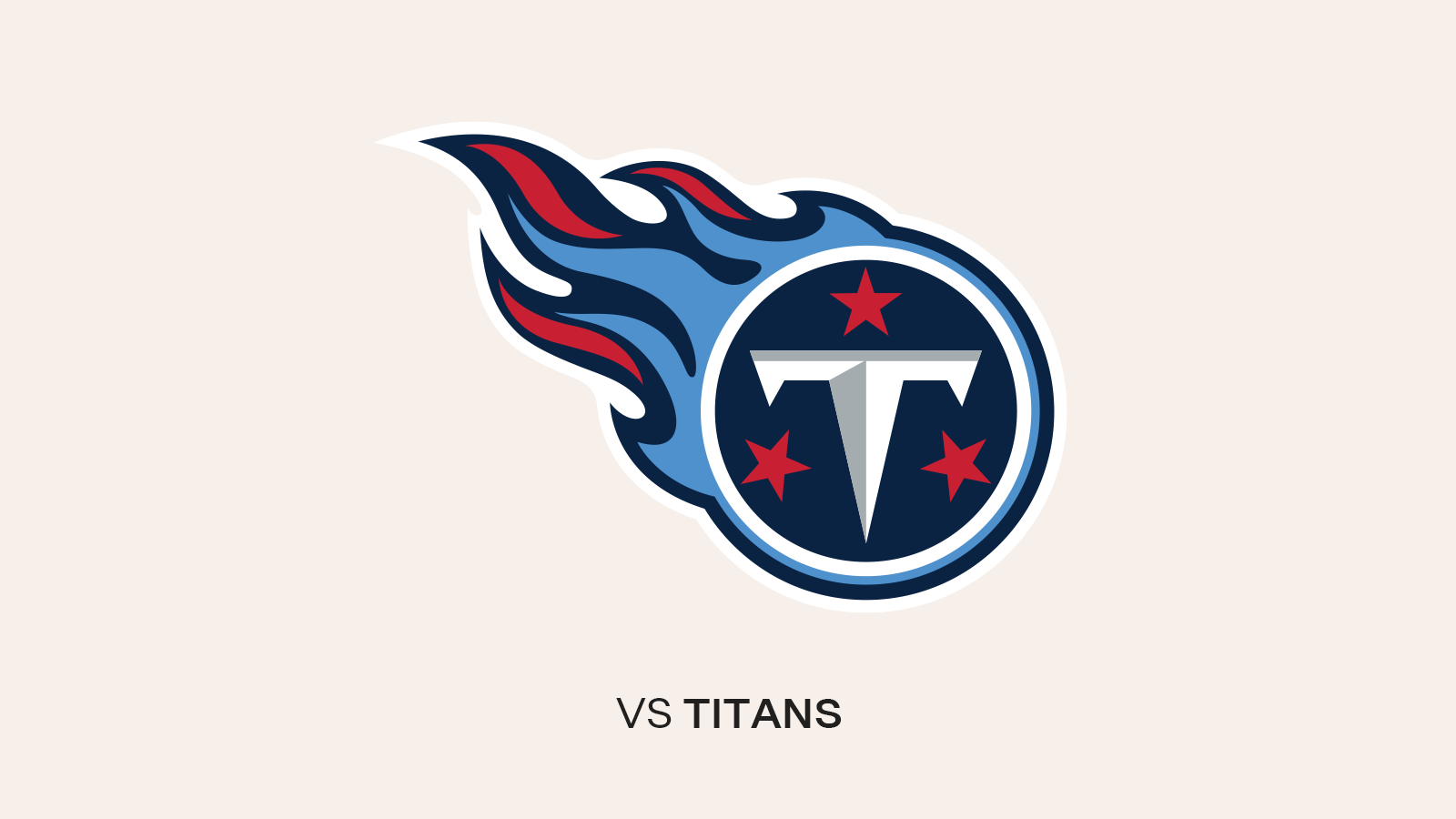Two-thirds into their quest of finishing the 2019 season, Bruce Arians' first as head coach, with a six-game winning streak, the 7-7 Tampa Bay Buccaneers return home for two final games at Raymond James Stadium. The first not only gives them a shot to win five in a row for the first time since 2016 but also puts them into the role of potential spoiler, as the Houston Texans bring a 9-5 record and a one-game lead in the AFC South to town.
Houston got that grip on the division, and put their title hopes into their own hands, but winning a big showdown with the Tennessee Titans in Nashville in Week 15. Deshaun Watson threw two touchdown passes to Kenny Stills and the Texans withstood a big second-half rally to hold on to a 24-21 win. The two teams will meet again in Week 17 in Houston, which adds importance to the Texans' in-between stop in Tampa. Houston would clinch the division with a win over the Buccaneers, avoiding a potential winner-take-all showdown the following Sunday. However, if the Bucs defeat the Texans and the Titans win at home against the Saints, the division would still be up for grabs.
That victory over a red-hot Titans team is one of several impressive Houston victories in recent weeks. The Texans also took down the New England Patriots in a Sunday night contest three weeks ago and won another important division game against the Colts in Week 12. However, a puzzling 38-24 loss to Denver fell in between the Patriots and Titans games and the top-seeded Ravens ran them out of Baltimore in Week 11, 41-7.
Houston's offense can be dazzling, particularly when quarterback Deshaun Watson is making plays on the move and wide receiver DeAndre Hopkins gets the ball in the open field. In addition, the Texans added a power-running component to their attack when they traded for Carlos Hyde, who just posted his first career 1,000-yard rushing season, right before the season. Houston ranks in the top 11 in total offense, passing offense and rushing offense, and it has been very good in situational football, mainly red zone efficiency and third-down conversions.
The Texans' defense is without star lineman J.J. Watt and has given up the fifth-most yards in the league. The same areas that have been a strength for the offense – red zone and third down – have been pressing problems for the defense. Still, the middle of the field is patrolled by tackling machine Zach Cunningham, the pass-rush still features a star in Whitney Mercilus and the secondary is led by ageless cornerback Johnathan Joseph. Here's a closer look at some of the challenges and opportunities the Bucs will encounter when they return home to play one more game with playoff implications on Saturday:
TEXANS DIFFERENCE-MAKERS
Houston's top difference-maker is, of course, Watson, who has thrown for 26 touchdowns and run for a team-high seven more. Watson has a 100.4 passer rating and a 5.0 yards-per-carry average and is especially dangerous when he's on the move, whether by design or on a scramble. The Texans basically use two offensive groupings – three-wide and two-tight end – and Watson spreads the ball around to Hopkins, Will Fuller and Kenny Stills, in addition to tight ends Darren Fells and Jordan Akins, both of whom have 31 catches. The Houston defense has playmakers in a largely reshaped secondary but has given up a good number of yards and points. Here are four specific Texans who, along with Watson, could cause the Buccaneers trouble on Saturday:
1. WR DeAndre Hopkins.
Hopkins is a known commodity at this point, seven years into his outstanding career, and that commodity is very valuable. He won't match last year's high-water marks of 115 catches and 1,572 yards, and he might not reach double-digit touchdowns for the third year in a row, but he is still clearly the focal point in the Texans' passing attack. Hopkins has 99 catches on the season and no other Houston player has more than 47. Hopkins' per-catch average of 11.5 yards is actually a career low but he is a big, physical runner who remains a threat in the open field. Hopkins has also had three years to play with Watson now so he knows what to get to the right spots on the field when Watson is out of the pocket.
2. S Tashaun Gipson.
Gipson is one of nine players among the Texans' current group of 12 defensive backs who was not with the team in 2018, and he has made a big impact. The Texans signed Gipson after he was released by division-rival Jacksonville, where he was a productive starter for three years after four very good seasons in Jacksonville. Gipson arrived with 20 career interceptions and two pick-sixes and has since added three more picks, one returned for a touchdown. He leads the team in that category and is also second with eight passes defensed while filling out his stat line with three quarterback hits and two tackles for loss. One of Gipson's top strengths as a safety is matching up with tight ends, which could pose a problem for the Buccaneers, whose injury-riddled receiving corps would seem to make tight ends O.J. Howard and Cam Brate more target-friendly this weekend. The 6-1, 212-pound Gipson is strong and hard for tight ends to maneuver out of the way, but he's also quick enough to match them in coverage and can win jump balls.
3. T Laremy Tunsil.
The Texans had an offensive line problem in 2018 – Watson was sacked an incredible, NFL-high 62 times – but they found a great solution for the critical left tackle spot just before the season. It cost quite a bit, as the Texans sent two first-round picks, a second-round pick and a couple players to the Dolphins for Tunsil, Stills and a fourth-round pick. And so far the Texans are happy to have paid up, as Tunsil is playing at a Pro Bowl level and Watson has been sacked a more palatable 39 times in 14 games. Tunsil has also made a difference in the rushing attack, helping another late addition, Hyde, crack 1,000 yards and the team to average 4.8 yards per carry. At 6-5 and 313 pounds, Tunsil is big and strong but he also has excellent footwork and rarely gets off balance or goes to the ground. He also has a long wingspan and usually wins the hand-fighting battles with pass-rushers. Tampa Bay's Shaq Barrett, the NFL's sack leader, is going after the franchise's single-season record this Saturday, but when he's rushing off the blind side he's going to have quite a challenge in getting past Tunsil.
4. OLB Whitney Mercilus.
Last seen rumbling 86 yards from his own goal line on an interception to set up the first score in Houston's big win over Tennessee, Mercilus is more of a threat to Bucs quarterback Jameis Winston before he throws a pass. Mercilus leads the Texans with 5.5 sacks and is tops among active players on the team with 13 QB hits (J.J. Watt, on IR, has 20). Mercilus has 48 sacks over eight seasons, peaking with 12 in 2015, but he's been in more of a pure edge-rushing role since the trade of Jadeveon Clowney before the season. He primarily comes at the quarterback from the weak side of the line, with Brennan Scarlett playing on the strong side. The 6-4, 258-pound Mercilus has a build like that of Jason Pierre-Paul and a similarly long reach with 34-inch arms. He can rush with a hand in the ground or standing up and he has a well-developed array of pass-rush moves. He also plays with a high motor, so Buccaneer pass-blockers will need to play to the whistle on Saturday.
STRENGTHS
Most of Houston's strengths are on the offensive side of the ball, where they rank 10th in scoring and seventh in yards per game, including seventh on the ground and 11th through the air. The Texans rack up first downs at a clip of 22.2 per game (5th in the NFL) and are also top five in third-down conversion rate (46.1%) and red zone touchdown percentage (65.96%). Watson has completed more than two-thirds of his passes while the rushing attack is picking up 4.8 yards per carry. The Texans' cover teams have also been good, allowing just 3.5 yards per punt return and 18.8 yards per kickoff return. Here are some more specific areas in which the Texans have done well this season:
· As noted above, the Texans' offense has been extremely good in the red zone, tying for fifth in the NFL with that high touchdown rate. The Houston offense runs with particular efficiency in that tight area of the field, running a "successful" play on 56.9% of its red zone snaps, the highest percentage in the NFL.
· One thing the Texans' defense has done well is defend passes thrown well downfield. Opponents have tried to go deep on Houston quite a bit – 63 passes thrown more than 20 yards downfield in the air, tied for the fourth-most against any defense – but haven't been particularly successful. Only 15 of those passes have been completed, and two have been picked off. Overall, Houston has allowed a passer rating of 55.7 on deep balls defined in this manner, third-lowest in the league.
· Just try to get Houston's offense off the field quickly and see how that goes. Helped by the league's fourth-best third-down conversion rate, the Texans have only been forced into a three-and-out 16 times in 14 games. That's 16 out of a total of 146 possessions, a three-and-out rate of just 11.0%, the lowest in the NFL. The league average is 20.4%.
· The Texans have had a clear advantage on punt returns. With DeAndre Carter handling all of their returns, the team is averaging 9.4 yards per attempt, which is fifth-best in the NFL. Meanwhile, the Houston cover teams have yet to allow a return of more than 15 yards and, as noted above, have given up an average of 3.5 yards on 20 returns. That's fifth-best in the NFL. That's helped the Texans hold their opponents to the fifth-worst average starting drive position, at the 26.5-yard line.
WEAKNESSES
Most of the very good numbers the Texans' offense has put up have been essentially matched by what opponents have done against their defense – 5,262 yards for, 5,311 against; 5.9 yards per play for, 6.0 against; 99.8 passer rating for, 100.8 against; 4.8 yards per carry for, 4.6 against; etc. Even the time of possession is nearly even, at 30:02 in favor of their opponents. Houston ranks 28th in total defense, 19th against the run, 28th against the pass and 20th in scoring defense. The only real blemish in the Texans' offensive numbers is a sacks-per-pass-play allowed rate of 8.58%, which is ninth-worst in the NFL. However, that's still an improvement over last season, when Watson was sacked an NFL-high 22 times. In addition:
· Houston's red zone defense is also the inverse of their red zone offense, ranking last in the NFL with a touchdown-allowed rate of 68.18%. A big part of the problem is an inability to get off the field on third downs; the Texans have allowed a third-down conversion rate of 56.0% in that part of the field, which is worse than their overall mark of 48.0% and is dead last in the NFL.
· Houston's offense has been quite good but it has generally taken it a while to get going and get into the end zone. For instance, in last week's 24-21 win over Tennessee neither team scored until Mercilus's aforementioned 86-yard interception return set up a short touchdown drive five minutes into the second quarter. In fact, no team has scored fewer than the 30 points that Houston has put up in 14 combined first quarters this year. Houston and Washington are tied for last in that category.
· The Buccaneers may want to consider throwing the football short and out to the left half of the field, as the Texans have had difficulty stopping that sort of play. Short left passes have a completion rate of 79.8% against Houston, which is the worst in the NFL, as is the 7.89 yards given up per that type of play.
· For the second week in a row, the Bucs would appear to have a significant advantage when they have the ball on offense in the final two minutes of either half. Tampa Bay leads the NFL in scoring in that situation, with 81 points, and Houston's defense has allowed 63 points in the same category, including 41 at the end of the first half. That's the fifth-most two-minute points allowed this year.
NEW FACES IN 2019
As noted earlier, nine of the Texans' 12 active DBs are new to the team this year, as are three-fifths of the starting offensive line. Laremy Tunsil's strong contributions in his first season with the team after a blockbuster trade are covered above, but the Texans also got a very useful receiver in that deal. Houston's top two running backs are also 2019 newcomers, both acquired via summer trades.
1. RBs Carlos Hyde/Duke Johnson. Johnson arrived first, in a June trade with the Browns but Hyde has become the primary ballcarrier. The Texans acquired Hyde from Kansas City at the end of August shortly after Lamar Miller was lost for the season to injured reserve. The two backs have been a complementary force out of the backfield, with Hyde rushing for 1,030 yards but only catching nine passes while Johnson is third on the team with 38 receptions but only has a third of the carries as Hyde. Both have run well, with Hyde averaging 4.6 yards per carry and Johnson 5.1, and they've combined for nine touchdowns.
2. CB Bradley Roby. CB Kareem Jackson, who had started 124 games over nine seasons since being a first-round pick by the Texans in 2010, went to Denver in free agency but the Texans quickly countered by signing Roby, the former Bronco. Roby has missed five games this year but he's been back for the past three and has an interception and two passes defensed in that span.
3. WR Kenny Stills. Stills scored two touchdowns in last week's win over Tennessee, doubling his season total. He's fourth on the team with 35 catches but has been one of the better downfield targets with a per-catch average of 14.5 yards that leads the team. Stills is the third option in the passing game behind Hopkins and Will Fuller but the Texans rely heavily on three-receiver sets so he is on the field the majority of the time.
ABSENCES/POTENTIAL ABSENCES
1. DE J.J. Watt. Watt, the Texans' three-time NFL Defensive Player of the Year, landed on injured reserve with a torn pectoral muscle in late October. Houston believes Watt may be able to get back on the field in 2019 using one of their two IR designated-to-return options. That won't be an issue for the Buccaneers, however, as the earliest that Watt could be activated is in Week 17.
2. T Tytus Howard. The Texans brought in a new pair of offensive tackles in 2019, drafting Howard with the 23rd-overall pick and later making a trade for Miami's Laremy Tunsil. Tunsil has stepped in on the left side and Howard joined him on the right side for seven starts (he also opened one game at left guard). However, Howard was sent to injured reserve with a knee injury on November 30 and Chris Clark is now the starter at right tackle.













































